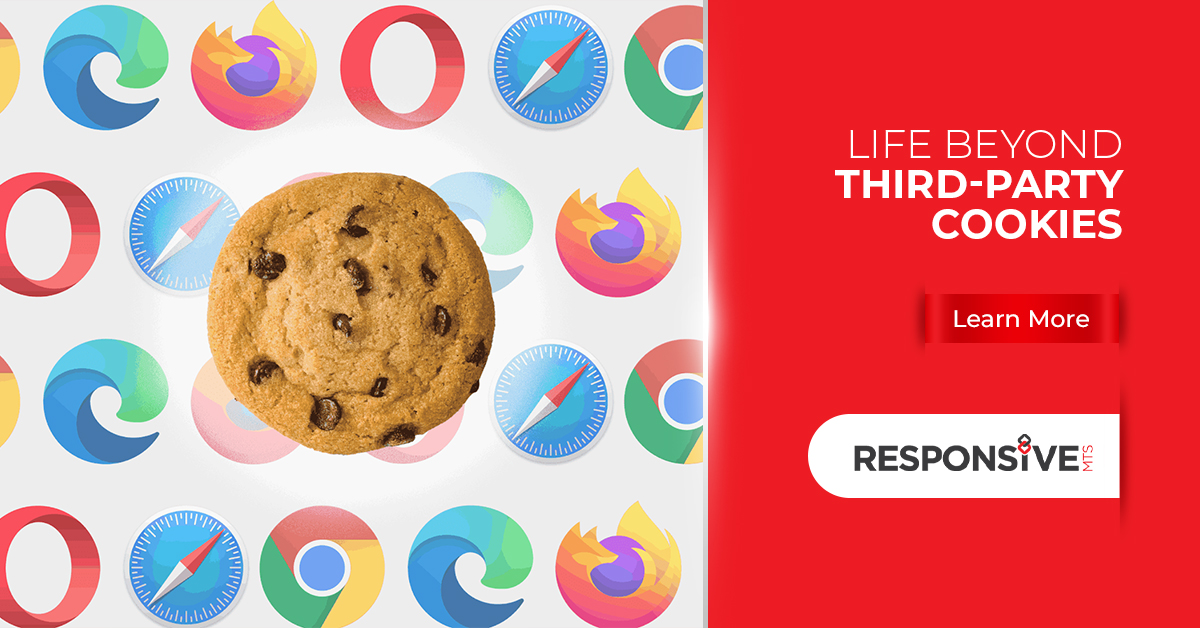The news about the impending “Cookie Apocalypse” is out! Ever since Google announced that it would disapprove of third-party cookies, marketers have been faced with a scenario that could potentially destroy digital advertising and alter the future of the internet.
Some experts are of the opinion that such a move was already in the offing and Google had been planning to make these changes for quite sometime now. So, rather than treating the changes like an alien invasion, marketers need to look at the bigger picture. So, if you are an advertiser and are looking at the possible impact of the loss of third-party cookies on marketers and consumers, then you are at the right place.
What is a third-party cookie and what should I do if they are eliminated?
Third-party cookies like their first-party counterparts are files that are set by a website other than the one you are currently using. They are simple text files that store data of your web experience on different websites. They allow data to persist between web pages. For example, you can have a “like” button on your website which will store a cookie on a visitor’s computer. That cookie can later be accessed by the website to identify the visitor and see which websites he looked at. Such cookies are known as third-party cookies. They provide a certain significance to the user experience, but third-party cookies have come under scrutiny lately as consumers are rapidly becoming exclusive about their privacy.
For marketers, these capabilities have made it easier to showcase more relevant advertisements to a more suited audience, but with access to these cookies vanishing rapidly, the time to make changes is now.
Below mentioned are a few tactics that can help you leave your cookies behind.
Contextual Advertising
The next best thing to beat the third-party cookies is to replace them with behavioral targeting. With contextual targeting, the ads you see are based on the nature of the content you are looking at. For example, if you are browsing a pizza website, you see ads for nearby pizza places or when you’re reading a blog about improving your ad optimization, you would receive an email about ad automation.
People-Based Targeting
Introduced in the digital world by Facebook, people-based targeting relies more on the user rather than identifying them by their devices. This method does not rely on third-party cookies to track users or collect data. It also allows brands to connect with the customers and engage with them.
A successful people-based targeting strategy breaks down into the following:
Identification:
Brands need to identify and interact with their audience correctly. The main objective is to be persistent and recognized.
Data:
the identification approach for customer data gives the brand an efficient hand at targeting.
Automation:
Instead of relying on browsing cookies, people-based marketing relies on first-party automation which helps brands look from a singular point of view of customers.
First-party Data from Phone Calls
Getting your hands on the first-party data from phone calls will always be greater than browsing cookies. Phone conversations can be utilized as the ultimate first-party data. When your customer calls you, they are literally telling you what they want and their honest feedback about your services. To put then into feasible and actionable datasets, you need an automated system that understands what being said derives accurate meaning from it.
Hope this blog helped you understand the current scenario around third-party cookies and prepare for its aftermath. As the tactics mentioned previously suggest, all is not lost and there are a bunch of avenues that can be explored. If you are looking for any kind of assistance with your digital strategies, please feel free to connect to our experts at Responsive MTS.
